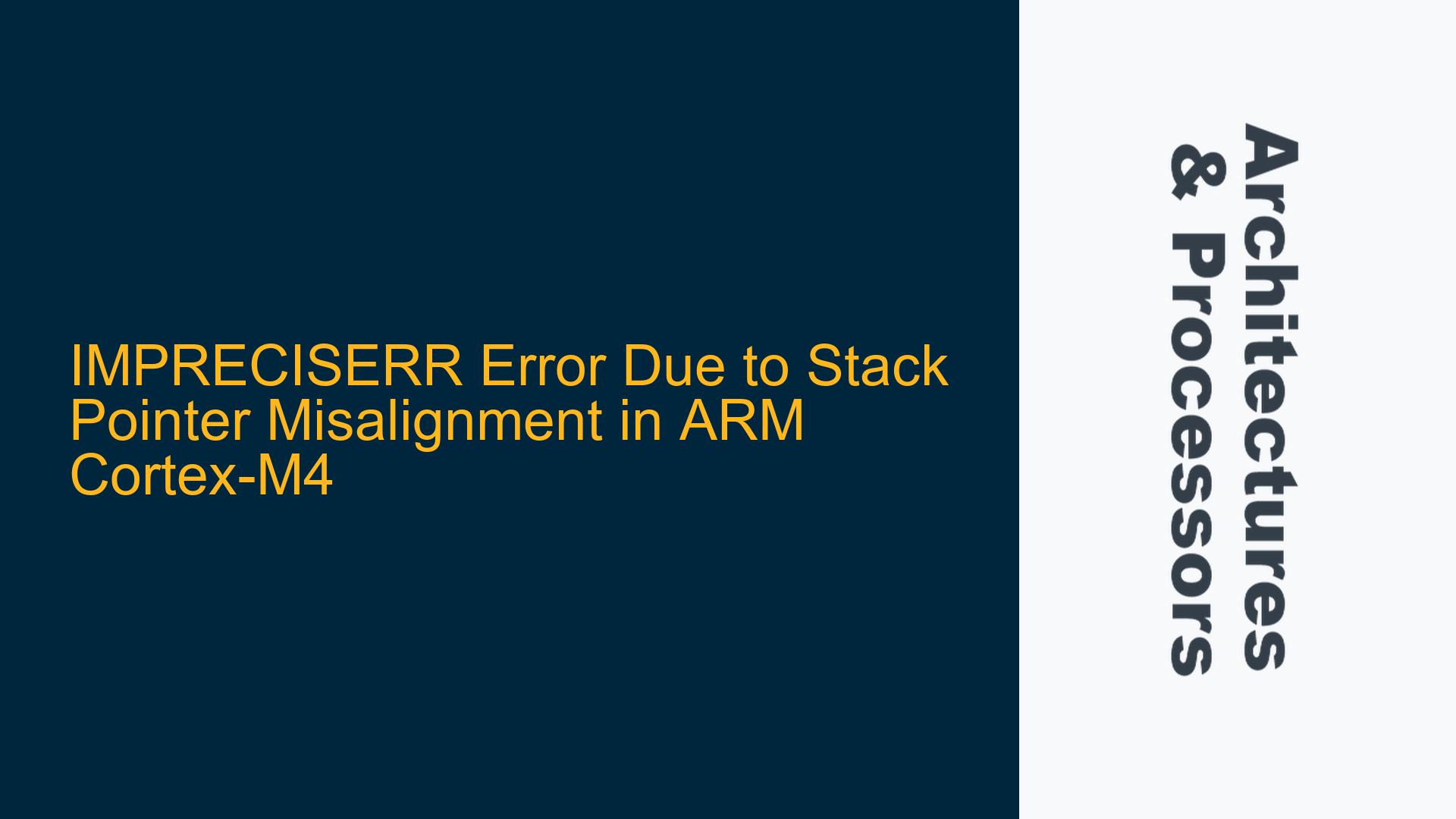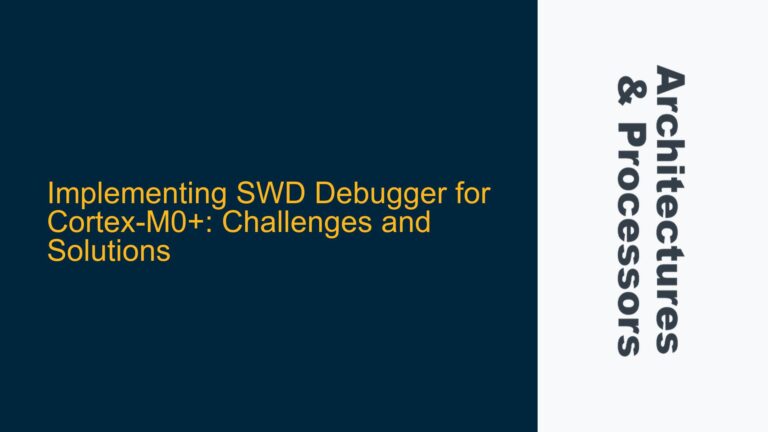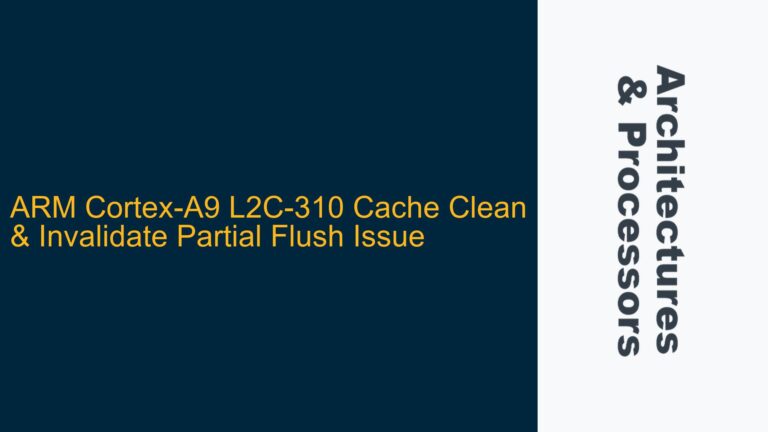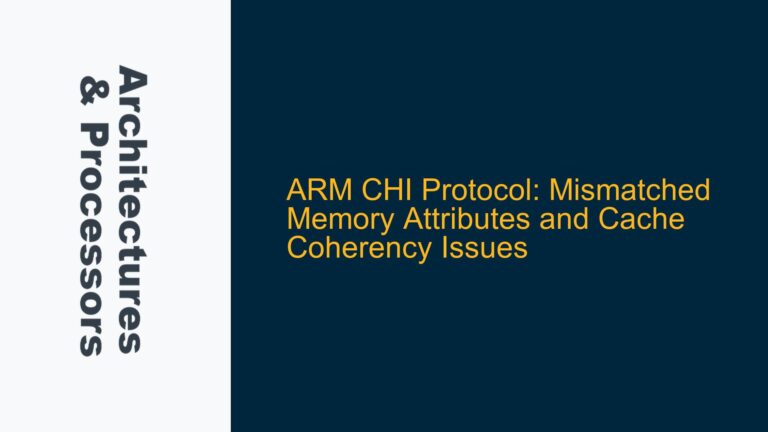ARM Cortex-M4 Stack Pointer Misalignment During Task Initialization
The ARM Cortex-M4 processor, like other ARMv7-M architecture-based processors, enforces strict alignment requirements for stack pointers. The stack pointer (SP) must always be aligned to an 8-byte boundary, as mandated by the ARM Architecture Reference Manual. Misalignment of the stack pointer can lead to unpredictable behavior, including the generation of an IMPRECISERR fault. This fault is categorized as a "imprecise bus fault," meaning the processor cannot pinpoint the exact instruction that caused the fault, making debugging more challenging.
In the provided scenario, the developer is attempting to initialize a task stack for a simple scheduler. The stack pointer is being manipulated manually, and an IMPRECISERR fault occurs when decrementing the pointer before storing a value. The fault disappears when the decrement operation is performed before the store operation. This behavior is directly tied to the alignment requirements of the stack pointer and the way the ARM Cortex-M4 handles stack operations.
The root cause of the issue lies in the initial assumption that the stack pointer can be decremented after storing a value without violating alignment rules. The ARM Cortex-M4 requires that the stack pointer remain aligned at all times, and any operation that results in misalignment will trigger a fault. The IMPRECISERR fault in this case is a direct consequence of the stack pointer becoming misaligned during the sequence of operations.
Stack Pointer Alignment Requirements and IMPRECISERR Fault Mechanics
The ARM Cortex-M4 processor enforces strict alignment rules for the stack pointer to ensure efficient and predictable memory access. The stack pointer must be aligned to an 8-byte boundary at all times. This requirement is critical because the processor uses the stack pointer to access memory for function calls, local variables, and context switching. Misalignment of the stack pointer can lead to inefficient memory access, data corruption, or, as in this case, a bus fault.
The IMPRECISERR fault is a type of bus fault that occurs when the processor detects an error during a memory access operation. Unlike precise faults, which can be traced back to a specific instruction, imprecise faults occur due to asynchronous events, such as a misaligned memory access. The fault is called "imprecise" because the processor cannot determine the exact instruction that caused the fault, making it harder to diagnose.
In the context of the provided scenario, the IMPRECISERR fault is triggered because the stack pointer becomes misaligned during the sequence of operations. When the developer attempts to decrement the stack pointer after storing a value, the resulting address may not be aligned to an 8-byte boundary. This misalignment causes the processor to generate an IMPRECISERR fault.
The alignment requirement is particularly important in the ARM Cortex-M4 because the processor uses a load/store architecture, where all memory accesses must be aligned to the size of the data being accessed. For example, a 32-bit memory access must be aligned to a 4-byte boundary, and a 64-bit memory access must be aligned to an 8-byte boundary. The stack pointer, being a critical component of the memory access mechanism, must adhere to these alignment rules to ensure correct operation.
Ensuring Proper Stack Pointer Alignment and Avoiding IMPRECISERR Faults
To avoid IMPRECISERR faults caused by stack pointer misalignment, developers must ensure that the stack pointer remains aligned to an 8-byte boundary at all times. This can be achieved by following a few key principles when manipulating the stack pointer:
-
Initialize the Stack Pointer Correctly: When setting up a task stack, ensure that the initial stack pointer value is aligned to an 8-byte boundary. This can be done by rounding up the stack size to the nearest multiple of 8 and aligning the stack base address accordingly.
-
Decrement the Stack Pointer Before Storing Values: As demonstrated in the modified code snippet, the stack pointer should be decremented before storing values on the stack. This ensures that the stack pointer remains aligned throughout the operation.
-
Use ARM-Specific Instructions for Stack Manipulation: The ARM Cortex-M4 provides specific instructions for stack manipulation, such as
PUSHandPOP, which automatically handle alignment requirements. Using these instructions can help avoid manual alignment errors. -
Enable Alignment Checking: The ARM Cortex-M4 includes a configuration option to enable alignment checking. When enabled, the processor will generate a precise alignment fault if a misaligned memory access is attempted. This can help identify and resolve alignment issues during development.
-
Validate Stack Pointer Alignment: Before performing any stack operations, validate that the stack pointer is aligned to an 8-byte boundary. This can be done using a simple bitwise operation to check the lower bits of the stack pointer address.
By following these principles, developers can ensure that the stack pointer remains aligned and avoid IMPRECISERR faults. In the provided scenario, the fault was resolved by modifying the code to decrement the stack pointer before storing the value. This simple change ensures that the stack pointer remains aligned and prevents the processor from generating an IMPRECISERR fault.
Example Code for Proper Stack Pointer Manipulation
// Initialize the stack pointer to an aligned address
uint32_t *pTask = (uint32_t *)((TASK1_STACK_START + 7) & ~0x7);
// Decrement the stack pointer before storing values
pTask--; // Ensure alignment is maintained
*pTask = (uint32_t)SET_XPSR_FOR_THUMB; // Store the xPSR value
This code snippet demonstrates the correct approach to initializing and manipulating the stack pointer. By aligning the initial stack pointer address and decrementing it before storing values, the developer ensures that the stack pointer remains aligned and avoids triggering an IMPRECISERR fault.
Debugging IMPRECISERR Faults
When debugging IMPRECISERR faults, it is important to consider the following steps:
-
Check the Stack Pointer Alignment: Verify that the stack pointer is aligned to an 8-byte boundary at all times. This can be done by inspecting the stack pointer value in the debugger.
-
Review the Code for Manual Stack Manipulation: Identify any code that manually manipulates the stack pointer and ensure that it adheres to alignment requirements.
-
Enable Alignment Faults: Enable alignment fault checking in the processor configuration to generate precise faults for misaligned memory accesses. This can help identify the exact location of the alignment issue.
-
Use Debugging Tools: ARM processors provide debugging tools that can help identify the cause of bus faults. Use these tools to analyze the fault and determine the root cause.
By following these steps, developers can effectively diagnose and resolve IMPRECISERR faults caused by stack pointer misalignment.
Conclusion
The IMPRECISERR fault in the provided scenario is a direct result of stack pointer misalignment during task initialization. By understanding the alignment requirements of the ARM Cortex-M4 processor and following best practices for stack manipulation, developers can avoid such faults and ensure reliable operation of their embedded systems. Proper initialization, careful manipulation of the stack pointer, and the use of ARM-specific instructions are key to maintaining stack alignment and preventing bus faults.






